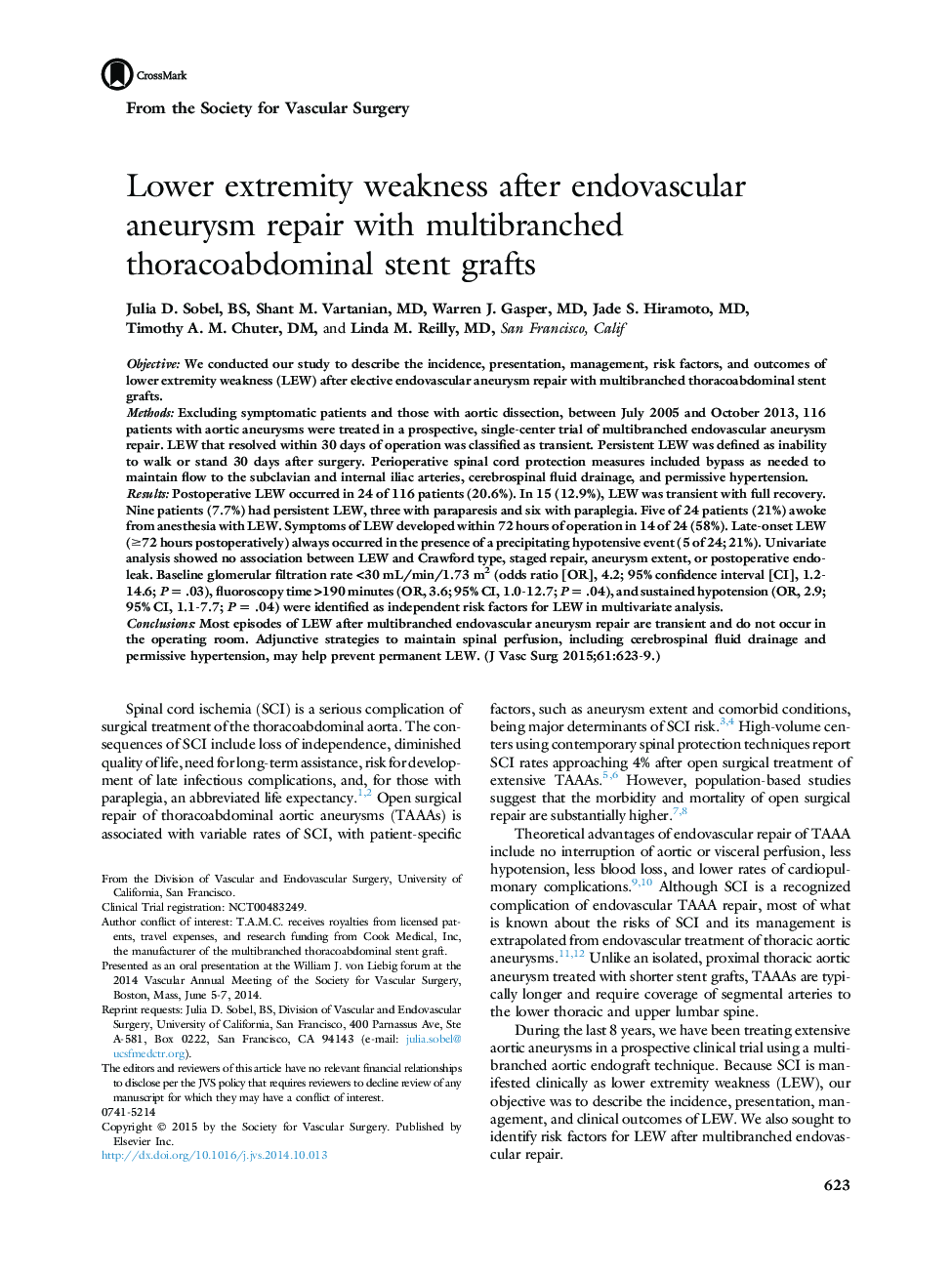| کد مقاله | کد نشریه | سال انتشار | مقاله انگلیسی | نسخه تمام متن |
|---|---|---|---|---|
| 2988627 | 1179824 | 2015 | 7 صفحه PDF | دانلود رایگان |
ObjectiveWe conducted our study to describe the incidence, presentation, management, risk factors, and outcomes of lower extremity weakness (LEW) after elective endovascular aneurysm repair with multibranched thoracoabdominal stent grafts.MethodsExcluding symptomatic patients and those with aortic dissection, between July 2005 and October 2013, 116 patients with aortic aneurysms were treated in a prospective, single-center trial of multibranched endovascular aneurysm repair. LEW that resolved within 30 days of operation was classified as transient. Persistent LEW was defined as inability to walk or stand 30 days after surgery. Perioperative spinal cord protection measures included bypass as needed to maintain flow to the subclavian and internal iliac arteries, cerebrospinal fluid drainage, and permissive hypertension.ResultsPostoperative LEW occurred in 24 of 116 patients (20.6%). In 15 (12.9%), LEW was transient with full recovery. Nine patients (7.7%) had persistent LEW, three with paraparesis and six with paraplegia. Five of 24 patients (21%) awoke from anesthesia with LEW. Symptoms of LEW developed within 72 hours of operation in 14 of 24 (58%). Late-onset LEW (≥72 hours postoperatively) always occurred in the presence of a precipitating hypotensive event (5 of 24; 21%). Univariate analysis showed no association between LEW and Crawford type, staged repair, aneurysm extent, or postoperative endoleak. Baseline glomerular filtration rate <30 mL/min/1.73 m2 (odds ratio [OR], 4.2; 95% confidence interval [CI], 1.2-14.6; P = .03), fluoroscopy time >190 minutes (OR, 3.6; 95% CI, 1.0-12.7; P = .04), and sustained hypotension (OR, 2.9; 95% CI, 1.1-7.7; P = .04) were identified as independent risk factors for LEW in multivariate analysis.ConclusionsMost episodes of LEW after multibranched endovascular aneurysm repair are transient and do not occur in the operating room. Adjunctive strategies to maintain spinal perfusion, including cerebrospinal fluid drainage and permissive hypertension, may help prevent permanent LEW.
Journal: Journal of Vascular Surgery - Volume 61, Issue 3, March 2015, Pages 623–629
